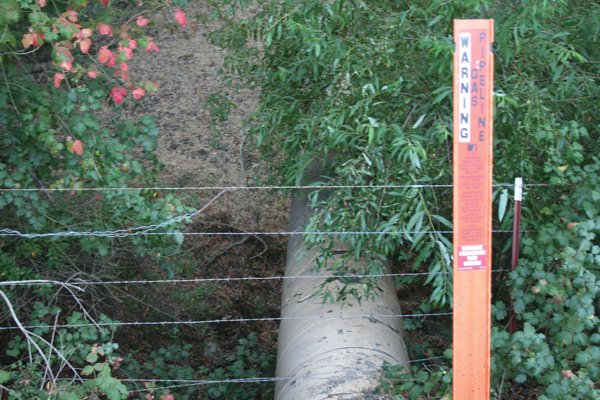After Andres Gonzalez, 58, saw news footage of San Bruno houses
leveled to the ground and wrecked cars covered in soot on the
morning of Sept. 10, he immediately thought of the pipelines that
line the corner of his house on the 600 Block of Forest Street.
After Andres Gonzalez, 58, saw news footage of San Bruno houses leveled to the ground and wrecked cars covered in soot on the morning of Sept. 10, he immediately thought of the pipelines that line the corner of his house on the 600 Block of Forest Street.
“I’ll be the first to blow up if that pipeline bursts,” he told his next-door neighbor half-seriously, “and you’ll be next.”
In response to the Sept. 9 San Bruno explosion caused by an underground 30-inch natural gas pipeline, PG&E released maps Monday outlining the 100 planning segments considered top priority for inspection and repair.
Gilroy is not in any of the released maps because no pipeline segments in the area have been considered dangerous, according to PG&E spokeswoman Nicole Liebelt. She said a map showing the natural gas pipelines running through the city will be available on their website in the near future.
“Our focus is in San Bruno right now,” Liebelt said, “But we do want to ensure citizens are well informed of the presence of pipelines in their area.”
Liebelt said the National Pipeline Mapping System, a federal website showing the approximate location of the country’s natural gas pipeline systems, is a good reference.
Gilroy’s gas conduits cross Highway 152 in the southeast meandering north lining the foothills towards Morgan Hill, according to the website.
Another pipeline segment runs along Broomfield Avenue going north to Frazier Lake Road. Lastly, pipes run along Pacheco Pass crossing U.S. 101 to Old Gilroy Street connecting to Chestnut Street with pipeways along Sixth Street, Forest Street, Lewis Street ending at I00F Avenue.
PG&E provides information about the proximity of pipelines to customer’s homes, but said maps had not been available until Monday due to security reasons.
The maps are listed by cities housing a pipeline that is part of the top-100 list, but may show surrounding regions that don’t necessarily present any alarm. Morgan Hill’s pipeline network doesn’t have any priority list segments, but can still be seen on the map for San Jose due to its proximity to the city.
PG&E finds high-risk pipelines through a multi-algorithm method, which factors proximity to high-density populations, the potential for third-party damage such as digs from construction, corrosion, ground movement as well as “the physical design and characteristics of the pipe segment.”
The list is constantly fluctuating, said PG&E spokesman Joe Molica, as some segments are removed when studies show segments are no longer high-risk areas, proactive action is taken and other sites are introduced if the 24-hour monitoring of the pipelines shows a new hot spot.
Jon Zekanoski, 55, has a PG&E valve a few feet away from his bedroom peeking out from a slanted piece of ground. He lives off Crews Road, which skirts the foothills east of Gilroy. “There is a lot of earth movement in this place,” he said, and points towards the hills. “The Calaveras fault is not too far away from here.”
When asked about Gilroy being situated along the San Andreas, Calaveras and Sargent fault lines, Liebelt said she could not give specific details on the area by press time and it wasn’t a priority by PG&E because the multi-algorithm had not detected it.
Other residents aren’t concerned about the pipelines close to their homes.
“I trust our government,” said Victor Rodriguez, who lives on the 700 Block of Forest Street. “Who would have seen that coming?” he said, referring to the San Bruno explosion.
Rodriguez said maps of gas pipelines available to all residents is too much information as they assist parties wanting to tamper with them.
Andres Gonzalez said PG&E workers drill Forest Street to check the pipelines twice a year.
Last year he prodded one of them to let him peer in the ridge to see the pipelines, but the worker wouldn’t let him out of fear for his safety.
“I live here,” Gonzalez said the day of the inspection, “just let me take a peek.”
The worker agreed and, as Gonzalez peered under the concrete, he remembers the worker saying, “Don’t worry, you’re safe.”
Gonzalez took his word for it. “Why should I worry?” he said. “I can’t think like that all the time. I just hope there aren’t any surprises.”













